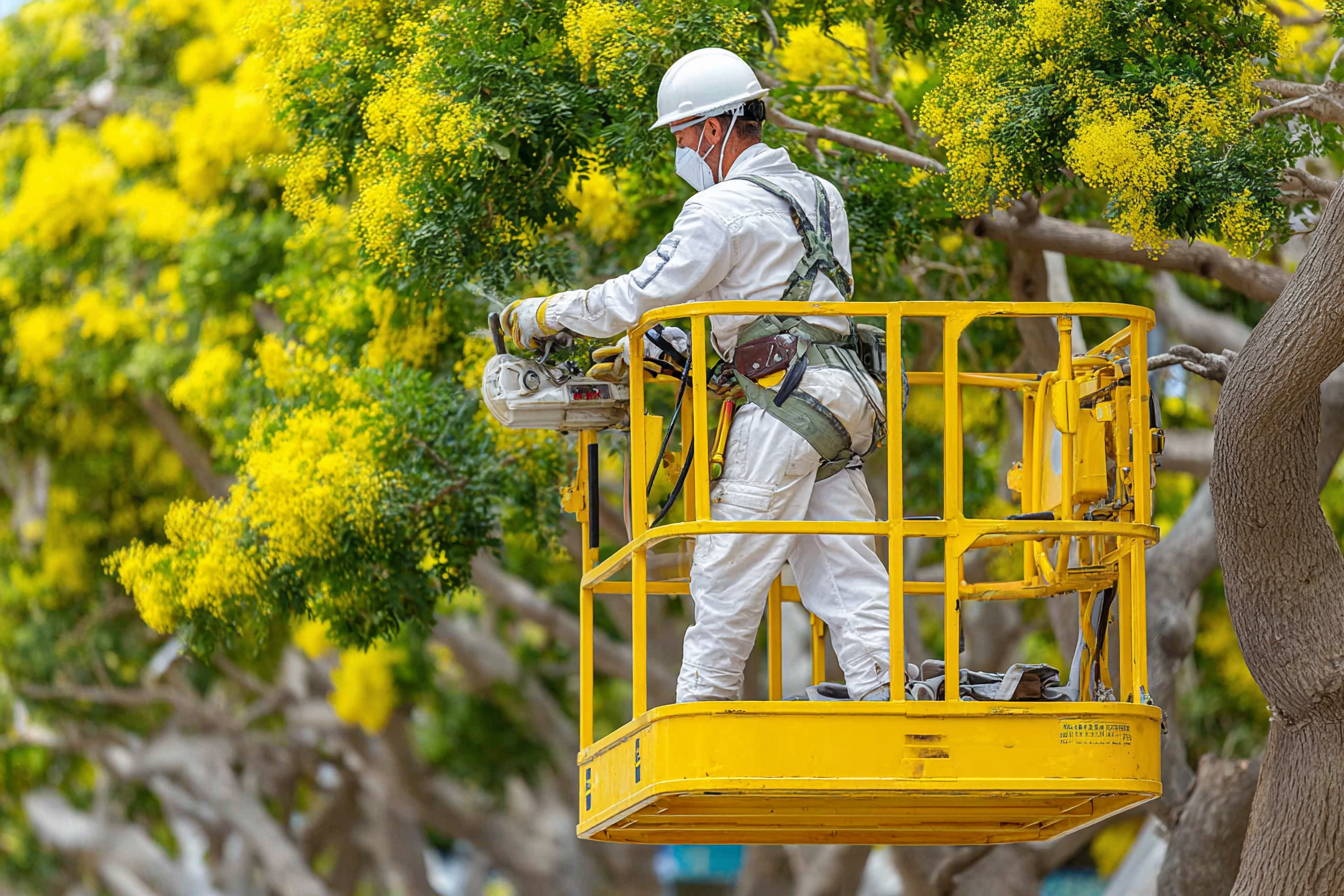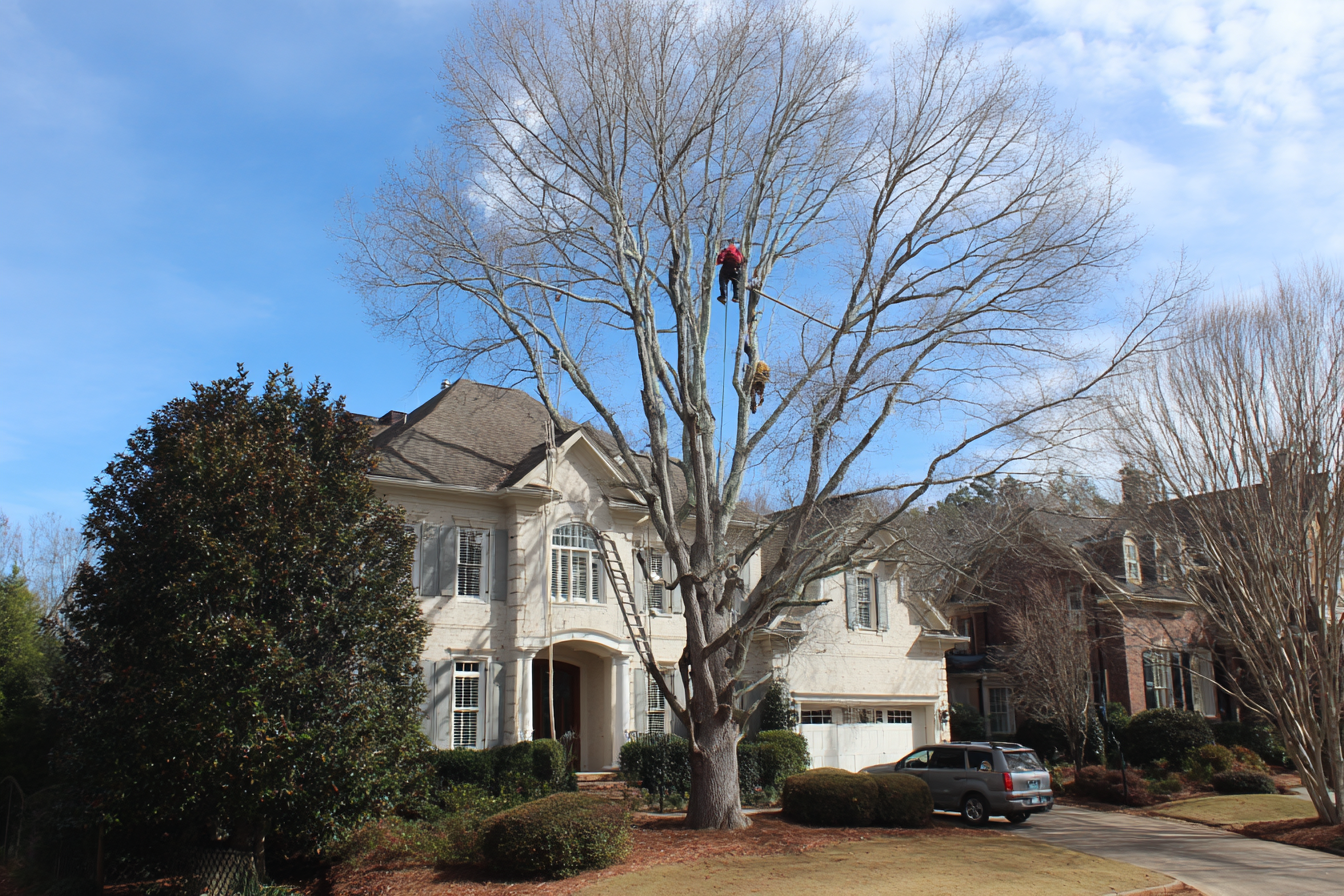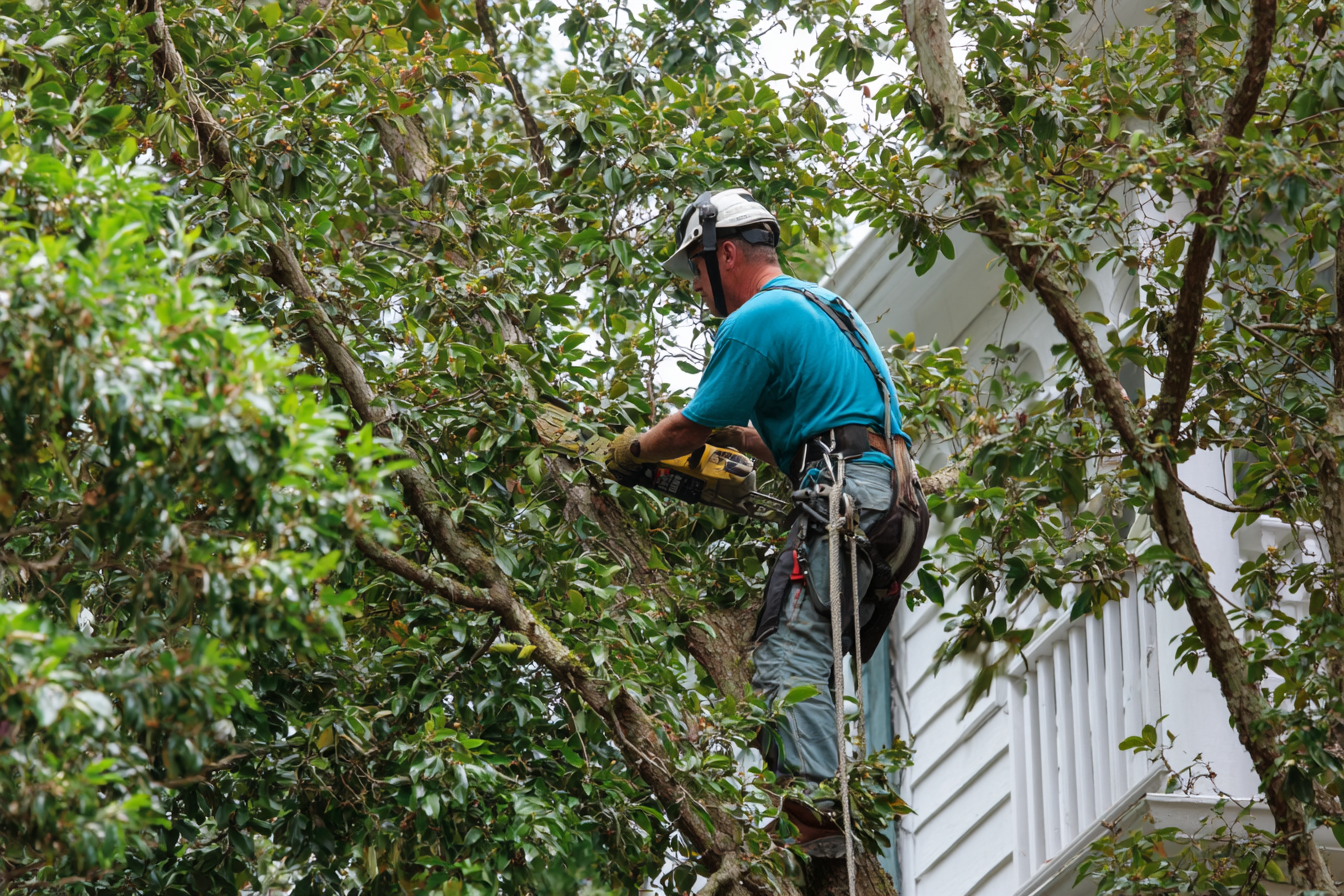
In Georgia, our trees are more than just part of the landscape; they are a defining feature of our homes and communities. They provide shade from the relentless summer heat, increase property value, and add to our yards' natural beauty. But what happens when these majestic giants become a liability? A single storm, a hidden disease, or an overgrown branch can turn a beautiful tree into a serious emergency, threatening your home and family.
Most emergency tree situations are not sudden. They are the result of underlying issues that have gone unnoticed for months or even years. This is where preventative tree care becomes your most powerful tool. It's not just about keeping your trees looking nice; it's about proactively protecting your investment and ensuring the safety of your property. By focusing on smart, consistent maintenance, you can save yourself from the stress, danger, and expense of a tree-related emergency.
This guide will walk you through the essential practices of preventative tree care, with a special focus on the distinct roles of trimming and pruning. You will learn to recognize the signs of a troubled tree and understand why a professional approach is the only way to truly safeguard your Georgia property.
The Difference Between Pruning and Trimming
Many people use the terms "pruning" and "trimming" interchangeably, but they serve two very different purposes in professional tree care. Understanding this distinction is the first step toward effective preventative maintenance.
Tree Trimming: The Aesthetic Touch
Tree trimming is primarily focused on controlling a tree's shape and size. Think of it as a haircut for your trees. The goal is to improve the tree's appearance and keep it from encroaching on unwanted areas.
- Purpose: Aesthetic maintenance, shaping the canopy for visual appeal, or controlling growth to keep branches away from structures, power lines, and walkways.
- Method: A more general cutting of overgrown branches to maintain a tidy and uniform look.
- Result: Enhances curb appeal, provides clearance for vehicles and pedestrians, and prevents branches from becoming a nuisance.

Tree Pruning: The Health-Focused Strategy
Pruning is a more strategic and health-oriented process. It's like surgery for a tree, where specific branches are removed with a purpose. A certified arborist will make calculated cuts to improve the tree's health, structure, and long-term vitality.
- Purpose: To improve the tree's health by removing dead, diseased, or damaged branches. This prevents the spread of infection and pests.
- Method: Selective removal of specific limbs to enhance air circulation and allow sunlight to reach the inner parts of the tree. It also helps to correct structural weaknesses.
- Result: A healthier, stronger tree that is more resistant to disease, pests, and storm damage. It promotes robust growth and extends the tree's life.
Both trimming and pruning are essential for comprehensive tree care, but pruning is the primary preventative measure against future emergencies. It targets the root cause of many tree failures.
Why Preventative Tree Care Is Critical in Georgia
Georgia's climate, with its hot, humid summers and occasional severe storms, creates a unique set of challenges for trees. This environment can put immense stress on even the healthiest trees, making preventative care a necessity, not a luxury.
1. Mitigating the Risk of Storm Damage
Preventative pruning removes weak, damaged, or dead limbs that are likely to break off during a storm. This is especially crucial for trees with canopies overhanging your home, garage, or driveway. A limb that looks harmless today could become a dangerous projectile in a thunderstorm. By addressing these weak points, you significantly reduce the risk of costly property damage.
2. Stopping the Spread of Disease and Pests
Georgia trees are susceptible to a variety of common diseases and pests, many of which thrive in our warm, moist climate. Diseases like Oak Wilt, Anthracnose, and Powdery Mildew can rapidly weaken a tree's structure. Insects like Pine Beetles can bore into the bark and disrupt the tree's ability to transport water and nutrients. Preventative pruning can halt the spread of these issues by removing the infected parts before they can take over the entire tree. A professional can identify the early signs of these problems and take action.
3. Enhancing Tree Health and Longevity
Just like a person needs regular check-ups, a tree needs consistent care to thrive. Pruning improves a tree's health by:
- Increasing Air Circulation: Thinning out dense canopies allows air to move freely through the branches. This reduces moisture buildup, which is a common cause of fungal diseases.
- Promoting Sunlight Penetration: Pruning lets more sunlight reach the inner foliage, promoting better photosynthesis and more uniform growth.
- Directing Energy: By removing dead or weak branches, the tree can redirect its energy and nutrients to the healthy parts of the canopy. This results in more vigorous growth and a stronger overall structure.
4. Increasing Property Value
Well-maintained, healthy trees are a major asset to any property. They can dramatically increase curb appeal and home value. On the other hand, a neglected or sickly tree can be a red flag for potential buyers and a sign of future problems.
How to Identify Common Tree Problems in Georgia
Being able to spot the early warning signs of a sick or stressed tree is a crucial part of preventative care. While a professional arborist is the best person for a full assessment, here are some things you can look for:
- Discolored or Spotted Leaves: Leaves that are yellowing, turning brown, or have unusual spots can be a sign of nutrient deficiency, disease, or pest infestation.
- Fungal Growth: Mushrooms or conks growing at the base of the trunk or on the tree itself can indicate severe internal decay or root rot. This is often a sign of a tree that is well on its way to failure.
- Cracks or Cavities in the Trunk: Any deep cracks, splits, or hollowed-out areas can compromise the tree's structural integrity.
- Dead or Dying Branches (Dieback): Branches with no leaves or with noticeably less foliage than the rest of the tree are a clear sign of a problem. This can indicate a lack of nutrients or the presence of disease.
- Leaning Tree: A tree that is suddenly leaning or has an unusual tilt may have a compromised root system and be at risk of falling.
If you notice any of these symptoms, it's a good idea to contact a professional arborist immediately.

Why You Need a Professional for Preventative Tree Care
While a homeowner can handle basic yard work, tree care is a different matter entirely. This is dangerous work that requires specialized knowledge, training, and equipment.
- Safety First: Tree work involves heavy tools, heights, and the potential for falling limbs. A professional team has the proper safety gear, training, and procedures to perform the job without risk to themselves or your property. Trying to tackle a large-scale pruning job yourself can lead to serious injury or damage.
- Expert Diagnosis: A certified arborist has the expertise to correctly diagnose a tree's problems. They can identify specific diseases or pests and recommend the most effective treatment. They understand the biology of trees and know exactly which branches to remove and where to make the cuts to promote healing and not cause further harm.
- Specialized Equipment: Professionals have access to the right tools, from high-quality saws and shears to cranes and wood chippers. This equipment allows them to work efficiently and safely, especially when dealing with large trees.
- Long-Term Strategy: A professional service doesn't just put a bandage on a problem; they provide a long-term care plan. They can advise you on the best time to prune based on the tree species and its growth cycle, ensuring the health and beauty of your trees for years to come.
Conclusion
Preventative tree care is the best way to protect your home and landscape from unexpected and costly emergencies. By choosing to invest in regular trimming and, more importantly, strategic pruning, you are taking a proactive step toward a safer and more beautiful property.
Waiting until a branch is hanging precariously over your roof is not a plan; it's an emergency. Don't let a small issue turn into a major disaster.
For a professional assessment and expert preventative tree services, contact Georgia Pro Tree Services today. Our certified arborists are ready to help you protect your home and ensure the long-term health of your trees.
FAQs About Georgia Tree Care
Q: What is the best time of year to prune trees in Georgia?
A: The best time to prune a tree depends on its species and purpose. For most deciduous trees in Georgia, the ideal time is during the dormant season, typically in late fall or winter. Pruning during this time minimizes stress on the tree and allows for easier identification of dead or damaged branches. However, some trees, particularly spring-flowering varieties, should be pruned after they have finished blooming. A professional arborist can determine the best time for your specific trees.
Q: How often should I have my trees trimmed or pruned?
A: The frequency of tree care depends on the species, age, and health of the tree. A good general rule is to have your trees professionally inspected and pruned every 3-5 years. Younger trees may need more frequent structural pruning to encourage proper growth, while mature trees may only need periodic maintenance to remove dead limbs and address any issues.
Q: Can I do preventative tree care myself?
A: While you can handle minor trimming of small, accessible branches on shrubs or small trees, a professional should perform any significant pruning or trimming of large trees. The risk of injury to yourself or damage to your property is high. Furthermore, improper cuts can permanently damage or even kill a tree. Professionals have the training and equipment to perform the job safely and correctly.
Q: How can I tell if a tree is at risk of falling?
A: There are several signs that a tree is at high risk of failure. These include a significant lean, large cracks or cavities in the trunk, a lack of foliage or dead limbs on one side, and the presence of fungal growths at the base. Visible root damage or a sudden change in the soil around the base can also be a warning sign. If you notice any of these, it is crucial to have a professional arborist conduct a risk assessment immediately.

We're your local tree pros!
Georgia Pro Tree Services takes the highest quality of care when servicing your trees. Call us to find out how we can help you keep your yard in top shape.



